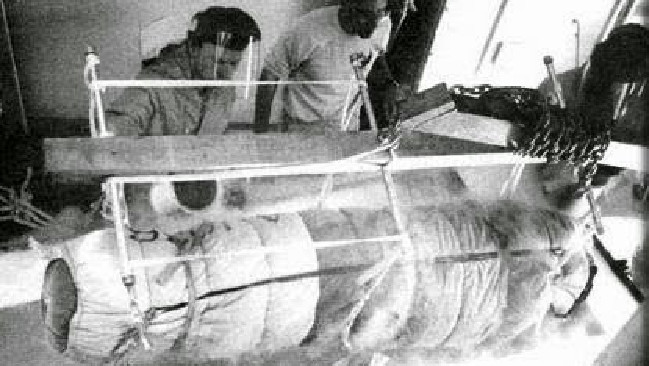It’s 50 years on since James Bedford was the first human to be cryonically preserved — frozen and stored indefinitely in the hope that technology would one day revive him. The science of cryonics has been widely touched by science fiction films and TV shows (remember Forever Young, the 1992 film starring Mel Gibson?), as it presents the science as a plausible way of preserving a particular race or individual. In the real world, the appeal of cryonics is understandable. Should anything happen to a human’s body, the option of being cryonically frozen is there in hopes of being restored, or in some ways resurrected, when human technology reaches new heights. The question that needs to be answered now stands: will it work? Athena Chan for The Tech Times reports.
Experiments are continuous in the exploration of the scientific merits of cryonics. However, current information leads scientists to doubt the possibility of actually being able to bring people back after being frozen. As the human body is extremely complex, it seems to some, unlikely, to be able to have the capability of simulating brain activity when it cannot even be done with the much less complex brain of a roundworm.
Today it is still in the theoretical phase, though no doubt the idea has been around for many years as last Jan. 12 marked the fiftieth anniversary of James Bedford’s death and cryonic preservation. Bedford was a professor of psychology at the University of California, and the first ever person to be cryonically frozen. Though the process done to his remains were much less refined as the process being done today, fifty year on, his body remains completely preserved in Arizona.
His was the first of 300 bodies and brains currently preserved in the world’s three known commercial cryonics facilities: Alcor; the Cryonics Institute in Clinton Township, Michigan; and KrioRus near Moscow. Another 3,000 people still living have arranged to join them upon what cryonicists call “deanimation.” In other words, death.
Cryonics patients are no longer frozen, but “vitrified.” First, the body is placed in an ice-water bath. Then, ice-resistant chemicals are pumped into the body, taking the place of water in the blood. That way, in the next step, when the body or brain is cooled to well-below freezing using nitrogen gas, it hardens without forming cell-damaging ice.
Vitrification has been used to effectively preserve blood, stem cells, and semen. But restoring life to a vitrified human—or to an organ as complex as the brain—remains an unfathomably distant prospect. If there is a divide on cryonics in the scientific community, it’s between neuroscientists willing to state that reanimation is at least within the realm of physical possibility, and those who believe it’s so unlikely that selling even the hope is unethical.
Aside from the fact that there is yet to be a cure for cancer, the disease from which Bedford died, now talks of preserving the individual’s memory from his brain is being explored instead of the initial idea of complete reanimation.
Reanimation or simulation?
Companies are now looking into the idea of essentially “downloading” an individual’s memories, behavior and likeness from a cryonically frozen brain with the help of Artificial Intelligence and nanotechnology. In the long run, they expect to be able to input the said stored information into a new body, hence, cheating death.
The idea of having a deceased relative “back” is in some ways fascinating and at the same time unnerving, as many deem it unethical. However, the question that begs to be answered lies in the new existence brought forth from the preserved memories. Will that individual be your beloved relative’s continued existence? Or will it be but a mere simulation of the once living and breathing loved one? Further, even some in the cryonic industry are doubtful of whether memories of an individual will survive after being cryonically frozen.
“It is this purposeful conflation of what is theoretically conceivable with what is ever practically possible that exploits people’s vulnerability,” says Michael Hendricks in the MIT Technology Review where he called the cryonic process a ‘false science.’
Despite doubts and uncertainties about the science of cryonics, many still consider the process as an option, distant as it may. Expensive as the process is, for some, holding on to the hope of one day being with a deceased loved one yet again is worth every penny rather than not being with them at all.
What do you think? What would you do?























Add Comment